Battery Electric Buses Reach Wireless Charging Milestone
Longest-Running, Wireless-Powered Mass Transit System in North America Powers Bay Area Transit Pioneer CCCTA
EXECUTIVE SUMMARY
The San Francisco area has a long history of electric-powered mass transportation. With full passenger loads, the instant torque of electric motors helps vehicles scale the city’s notoriously steep hills with far greater ease than do vehicles powered by internal combustion engines. Yet, one aspect of the city’s trolley system that always draws criticism from residents and tourists alike is the mess of wires overhead. Just across the bay in Walnut Creek, a new generation of battery-electric trolleys runs virtually all day long, never running out of power and without any wires overhead.
Five years ago, the Contra Costa County Transit Authority (CCCTA) installed WAVE wireless charging systems. Within seconds of scheduled stops, WAVE’s traffic-rated, roadway-embedded charging pads transferred power to a receiver mounted on the undercarriage of Gillig-manufactured trolley replica battery-electric buses (BEBs).
Wireless charging is sleeker and more elegant than legacy overhead pantograph systems. In selecting WAVE, CCCTA was able to preserve the historical beauty of the area while lowering both vehicle weight and cost. Approaching its fifth year in operation, CCCTA’s is the longest-running, wireless, heavy-duty, electric vehicle charging system in the United States.
THE HIGHLIGHTS
-
Smaller Battery. Greater Operating Time.
-80%+ state of charge maintained during in-route operations.
-
Less Intrusive. Less Maintenance.
Overhead infrastructure concerns eliminated.
-
Designed to Scale
as the electric fleet grows.
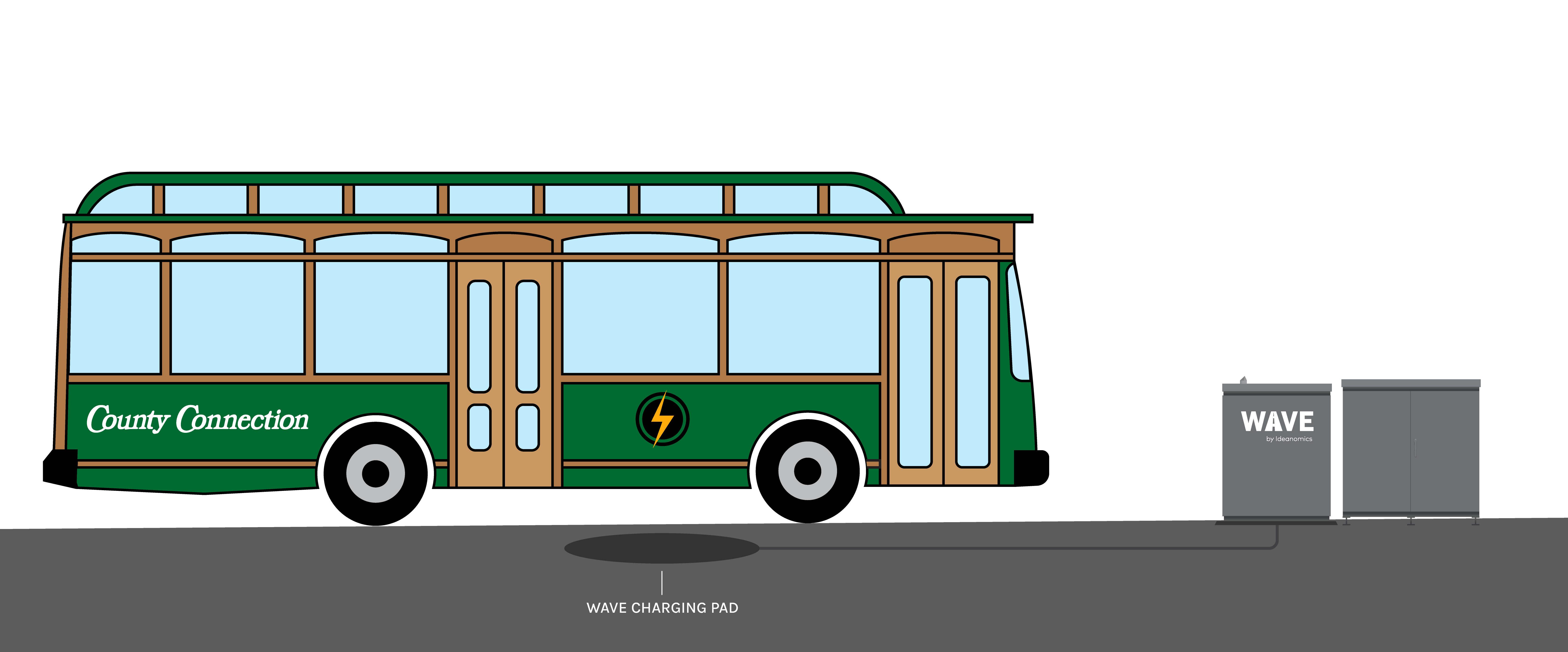
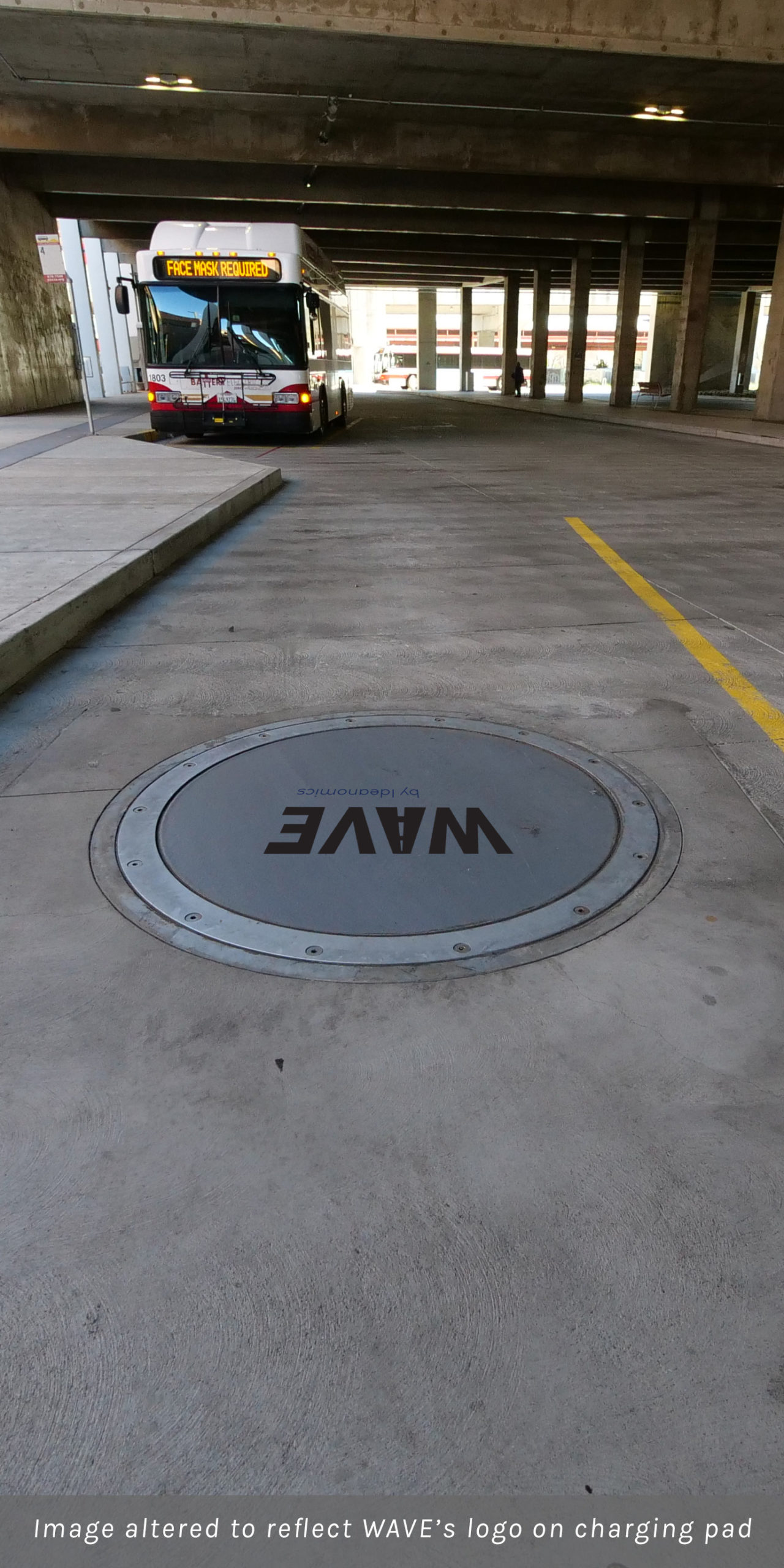
WAVE charging pad at Walnut Creek BART station.
The success at CCCTA shows that WAVE can provide transit agencies scalable and reliable charging infrastructure that enables BEB adoption in a less intrusive manner. Moreover, the ease and speed of wireless charging enable EVs on circular routes to run virtually non-stop. Wireless charging is ideal for electrifying airport shuttles, port-based drayage vehicles, and other vehicle types.
THE NUMBERS
The Contra Costa County Transit Authority has the longest running wireless vehicle charging system in North America.
5
300
10
95
THE CRITICAL NEED FOR IN-ROUTE CHARGING
Headquartered in Concord, California, CCCTA’s service area covers more than 200 square miles in the East Bay of the San Francisco area. Their four-mile route runs from the nearby Bay Area Rapid Transit (BART) station through downtown Walnut Creek, operating nearly fourteen hours on weekdays and nine hours on weekends, with weekday stops every twelve minutes.
In 2012, as the original diesel-powered trolleybuses were approaching their end of life, CCCTA was awarded a $4.32 million FTA Clean Fuels grant to help with its zero-emission transition.

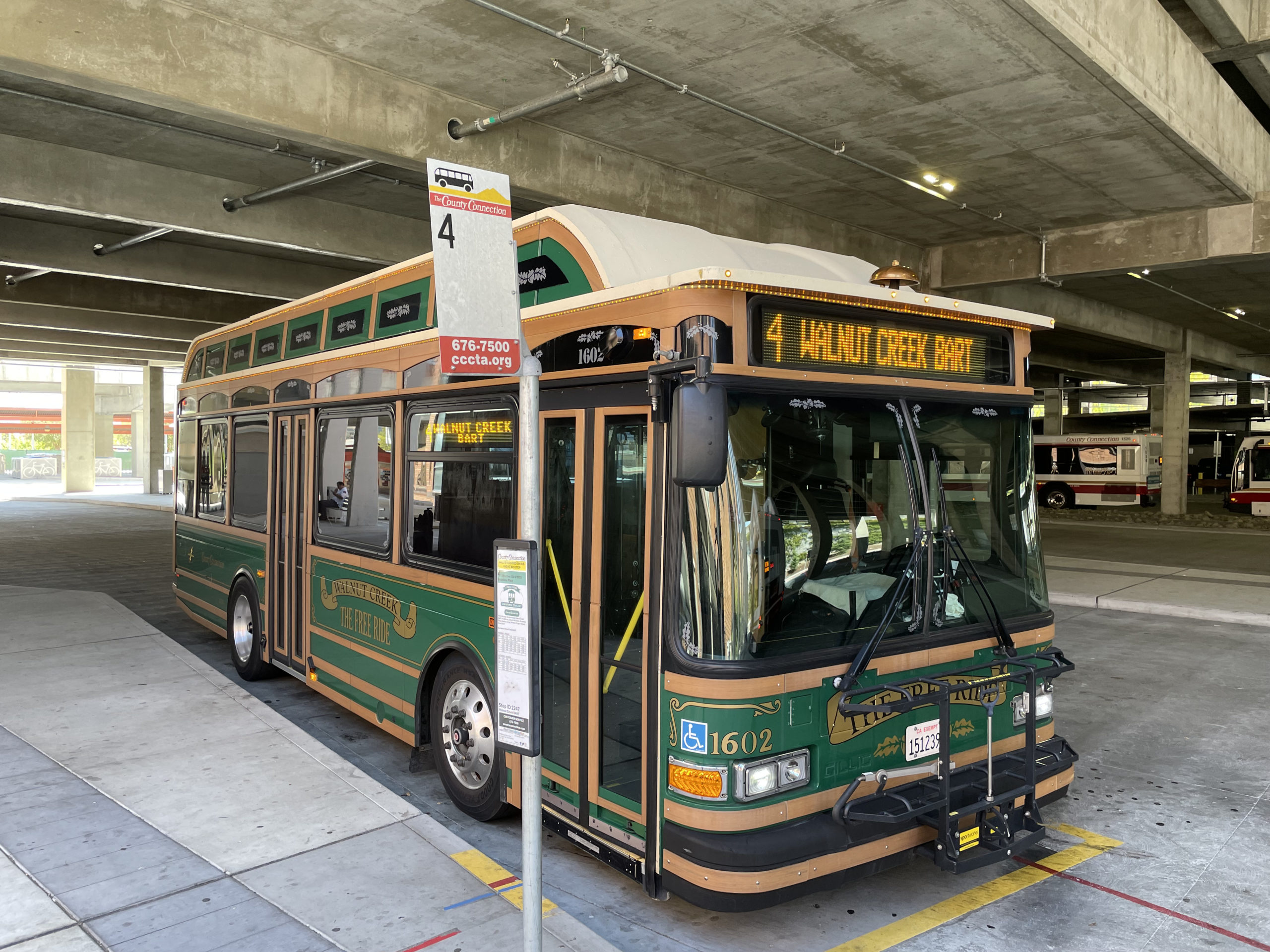
Gillig trolley replica electric bus on WAVE charging pad at Walnut Creek BART station.
Gillig was contracted to build four twenty-nine-foot trolley replica battery-electric buses (BEBs) with BAE electric propulsion systems. From the beginning, the agency intended to equip the buses with the smallest possible battery pack. “Streets, roads, tires, and suspension are all impacted by vehicle weight,” explained Scott Mitchell, Chief Operating Officer at CCCTA. “We wanted to go with the lightest battery pack possible to keep the weight down.”
The 90kWh battery equated to about forty miles of range or ten four-mile loops. However, the CCCTA depot is about twelve miles from where the route terminates. Using more than half the vehicle’s range to travel to and from the depot to charge was not practical. Instead, the agency elected an in-route charging strategy to keep the BEBs charged during normal route operations. WAVE wireless charging became the winning solution.
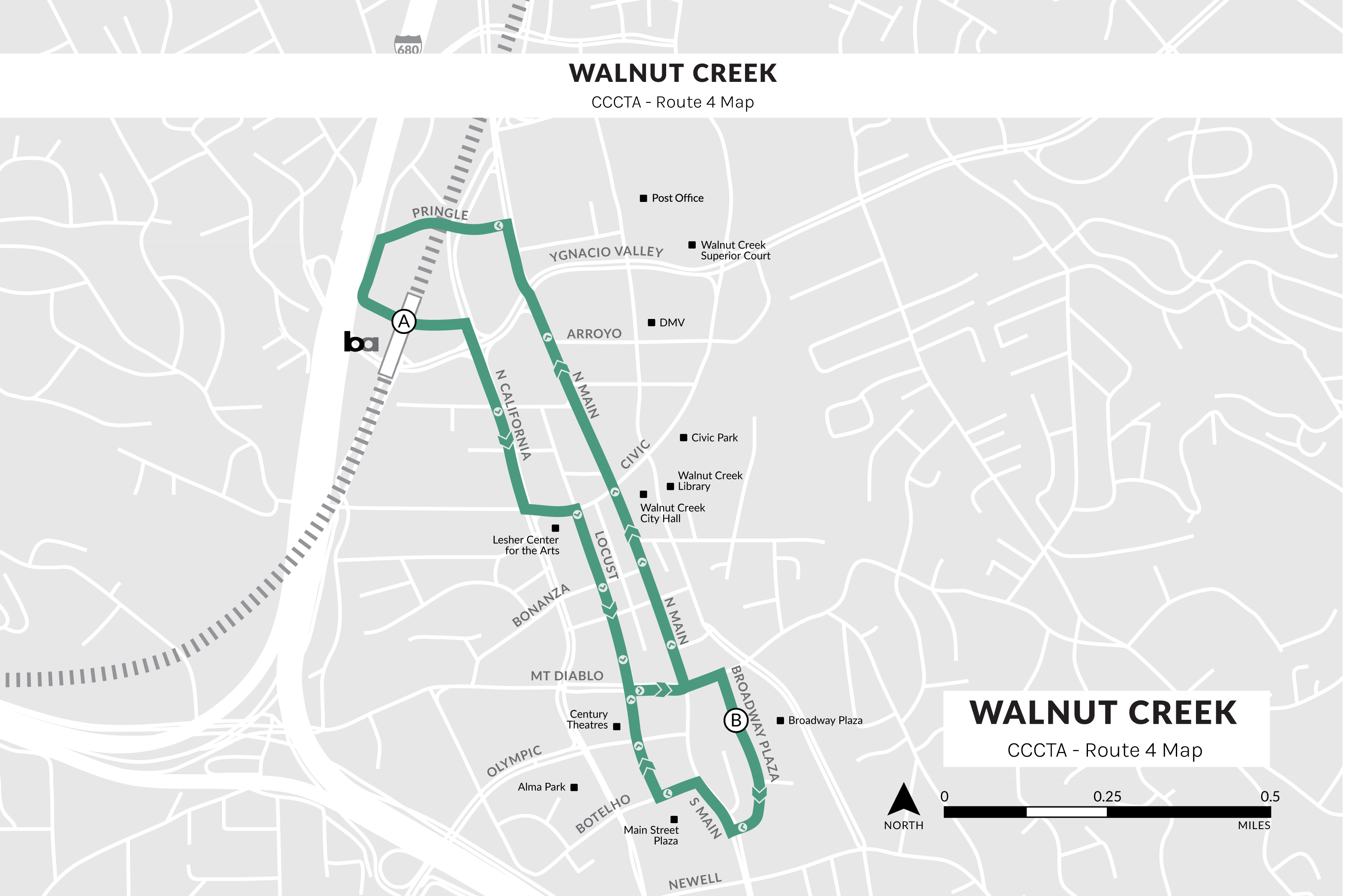
SMALLER BATTERY SIZE. GREATER OPERATING TIME.
Typically, transit agencies must equip their electric buses with the largest batteries possible to maximize range despite the hefty price tag. Thanks to reliable in-route wireless charging from WAVE, CCCTA achieved its goal of reducing battery size while maintaining neutral, 80 to 90% state of charge (SOC) for most of their daily duty cycle. By avoiding extreme charging from deeply depleted SOC, the agency will also maximize its operation and investment. “We never wanted to hit them with a high kilowatt charge. Our goal is to get about twelve years out of those batteries,” said Mitchell.
Mitchell noted, too, that the buses return to the depot with a 60 to 80% SOC, but lose 10% just getting back to the depot. It means buses could stay in the field without ever returning to the depot to charge, and practically the number of chargers in the depot can be significantly reduced to the point of pure in-route charging only.
State of Charge
LESS INTRUSIVE. LESS MAINTENANCE.
Plug-in charging systems require manual operators and are not suitable for in-route charging. Overhead pantograph systems create too much visual distraction for the community. “A lot of the communities are very concerned with aesthetics,” said Mitchell when asked about the decision to forgo the use of pantograph charging systems.
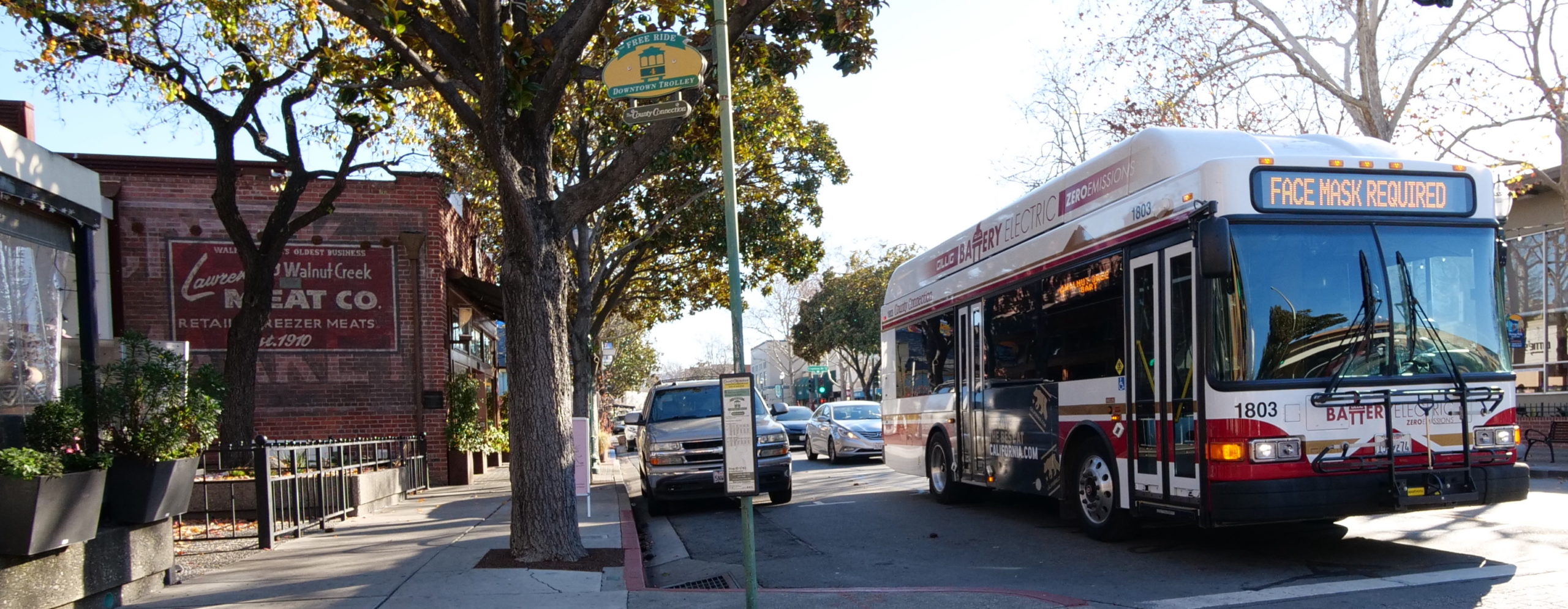
A Wireless - powered Gillig electric bus makes its way through downtown Walnut Creek.
”Wireless is the way to go. Being hands-off is just simpler, from both a user standpoint and on operations.
SCOTT MITCHELLCHIEF OPERATING OFFICER | CCCTA
The moving parts of pantograph systems also cause maintenance concerns. A bus-mounted pantograph ensures that only the vehicle with the pantograph is put out of service if the system malfunctions. However, bus-mounted systems add to vehicle weight. An inverted pantograph shifts the weight from the vehicle to the overhead charging infrastructure. However, when maintenance of moving parts is required, the entire charging station is unavailable. “Pantograph chargers are mechanically driven with lots of up and down movement, so there are maintenance concerns,” Mitchell explained of pantograph systems. “We needed to be less intrusive with lower maintenance. Being hands-off is just simpler, from both a user standpoint and on operations. Wireless is the way to go.”
INDUCTIVE CAN BE MORE EFFICIENT AT HIGH POWER
It is a common myth that wireless is drastically inefficient when compared to conductive. However, high-power conductive chargers require thick cables, which induce resistance and generate significant heat. The need for liquid cooling requires more energy, equating to lower overall energy efficiency. “Many are under the impression that if you have a plug and a cable, you’re getting a one-hundred percent efficiency,” remarked Mitchell. “Well, that’s not true. You’ve got resistance in the cables and equipment. With wireless, we’re getting higher efficiency than certain plug-in applications. And, with no moving parts, we’re not having to deal with plugs and cables wearing out.”
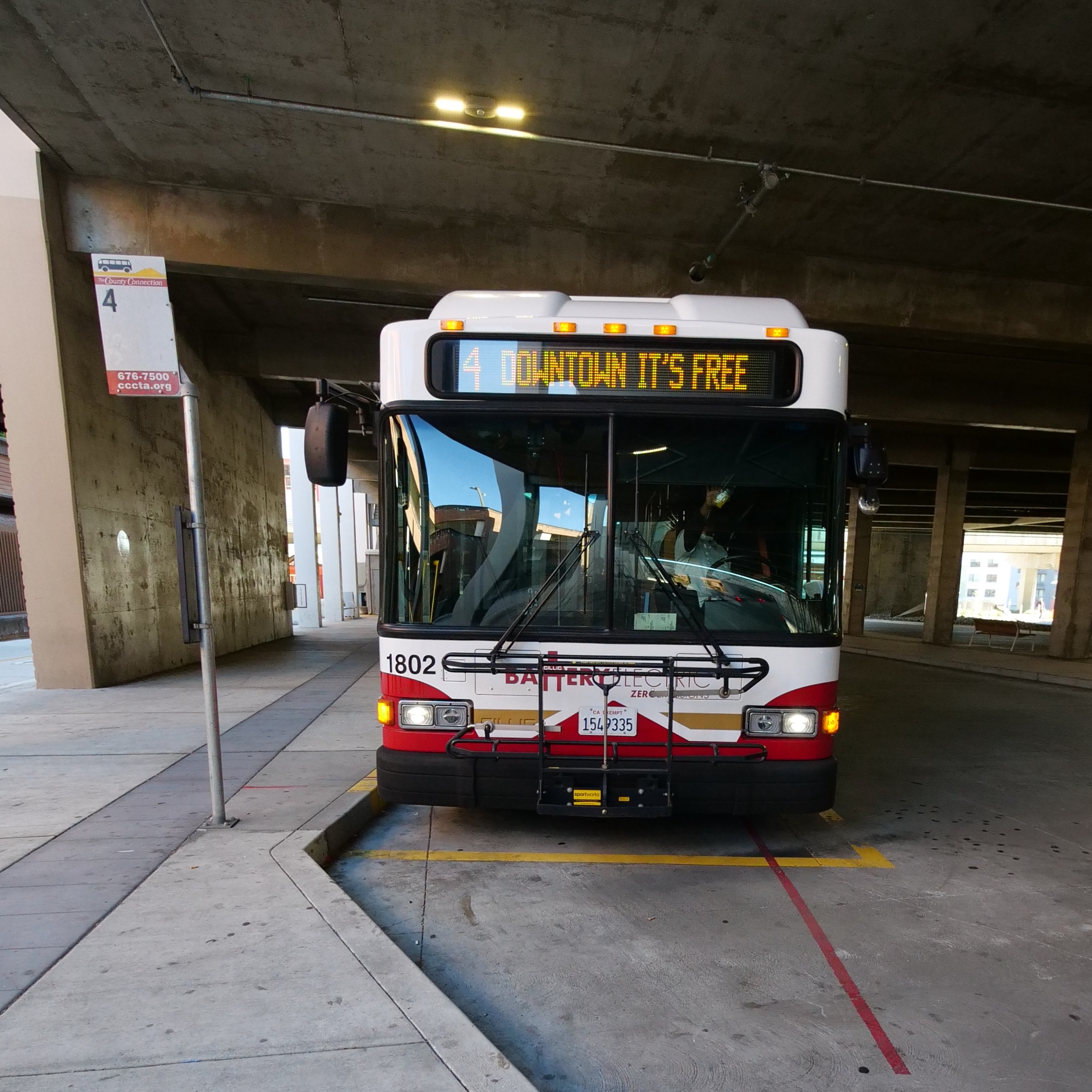
CCCTA’s Gillig battery-electric bus being wirelessly charged during a scheduled stop at the Walnut Creek BART station.
”With wireless, we’re getting higher efficiency than certain plug-in applications. And, with no moving parts, we’re not having to deal with plugs and cables wearing out.
SCOTT MITCHELLCHIEF OPERATING OFFICER | CCCTA
WIRELESS WORKHORSE DESIGNED TO SCALE
The WAVE Wireless system began powering CCCTA’s Route 4 fleet in November of 2016. The wireless system has been running nearly uninterrupted for close to 5 years, delivering an impressive 95% + uptime. A single 50kW charger on Route 4 is used every twelve to fourteen minutes, or forty-five times a day, for an average of 533kWh/day during peak operating times. The reliability and ease of wireless charging enable the efficient use of multiple buses throughout the day without returning to the depot to charge with a conductive charger. The latest WAVE chargers operate at 250kW and higher.
In 2016, CCCTA received another grant from the FTA’s Low-No Program to expand its service by four additional BEBs. To accommodate the extra vehicles, CCCTA ordered another WAVE charger at the BART station, with the original relocated there as well. After site preparation, relocating the original charger took less than a day and was fully functional in less than four. In the Spring of 2019, the second group of WAVE-equipped buses and both chargers went online, powering a second electrified route, Route 5.
To date, CCCTA’s electric fleet has logged approximately 300,000 zero-emission miles since 2016. Among those miles, WAVE wireless charging has been responsible for approximately 270,000 or a whopping 88%.
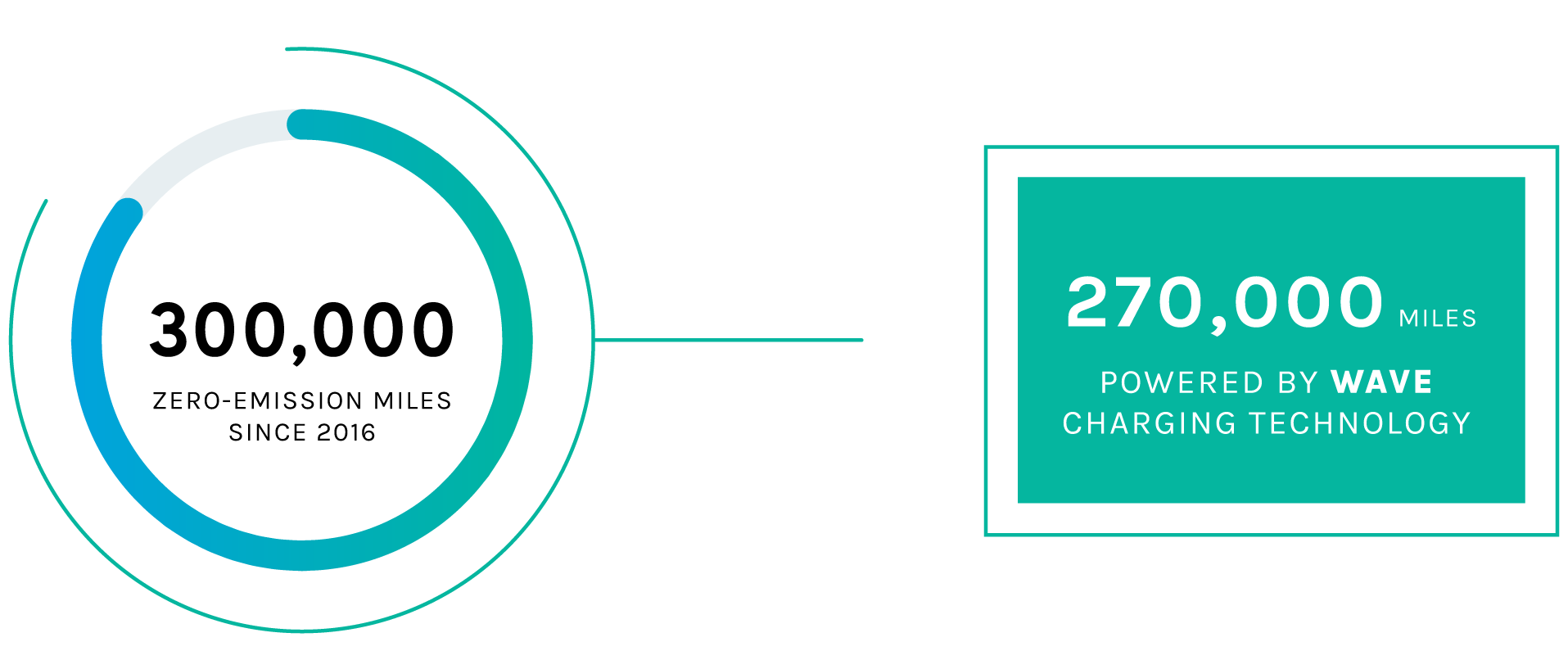
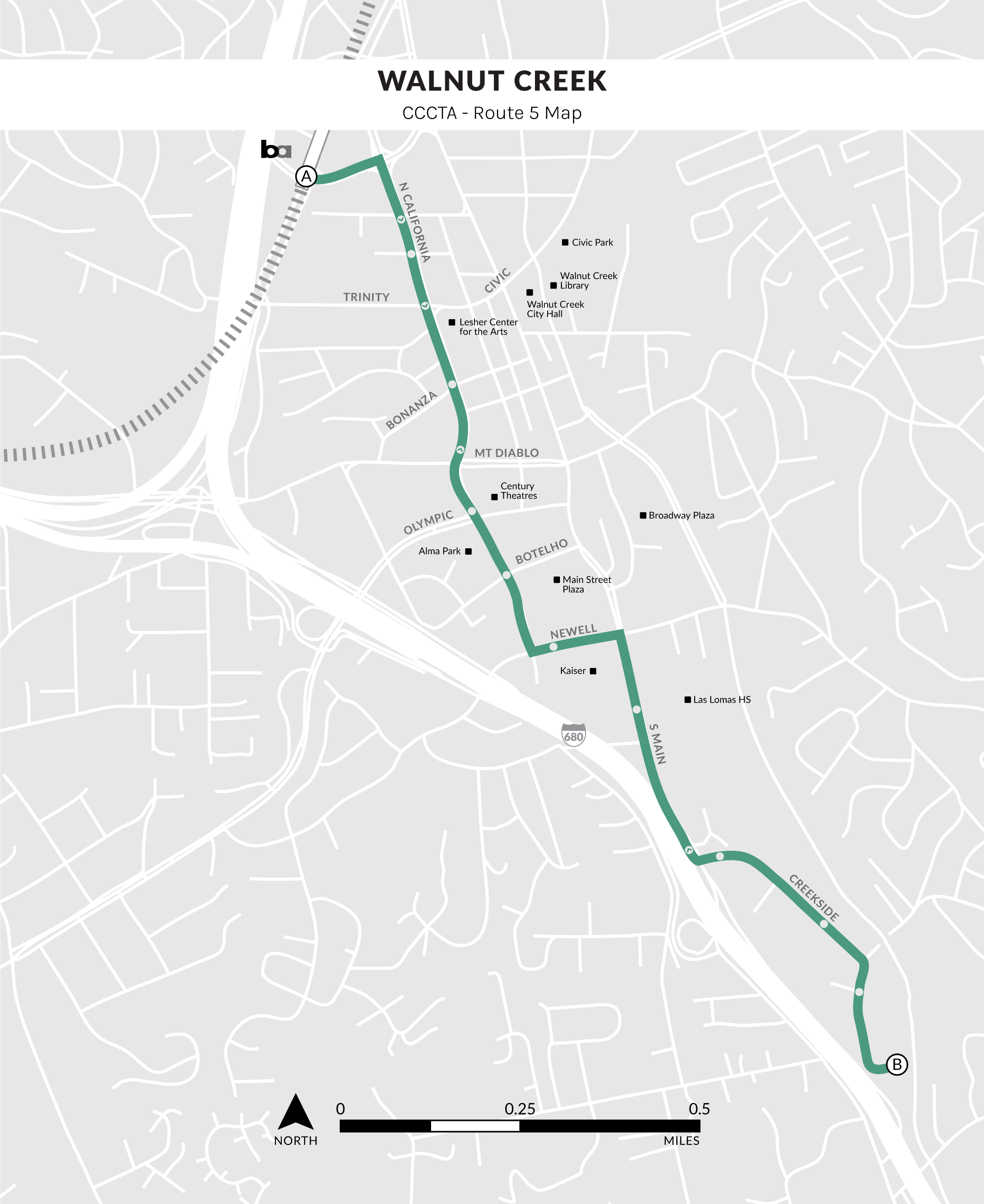
CONCLUSION
CCCTA’s operation proves that WAVE in-route wireless charging enables significant cost savings from reduced battery size and maintenance costs, achieves unprecedented reliability, and provides fast and seamless charging operations while maintaining the existing landscapes.
A picture-perfect electric-powered mass transit experience can be enjoyed by all CCCTA riders and residents alike thanks to this CCCTA’s charging strategy and WAVE’s wireless charging solution.
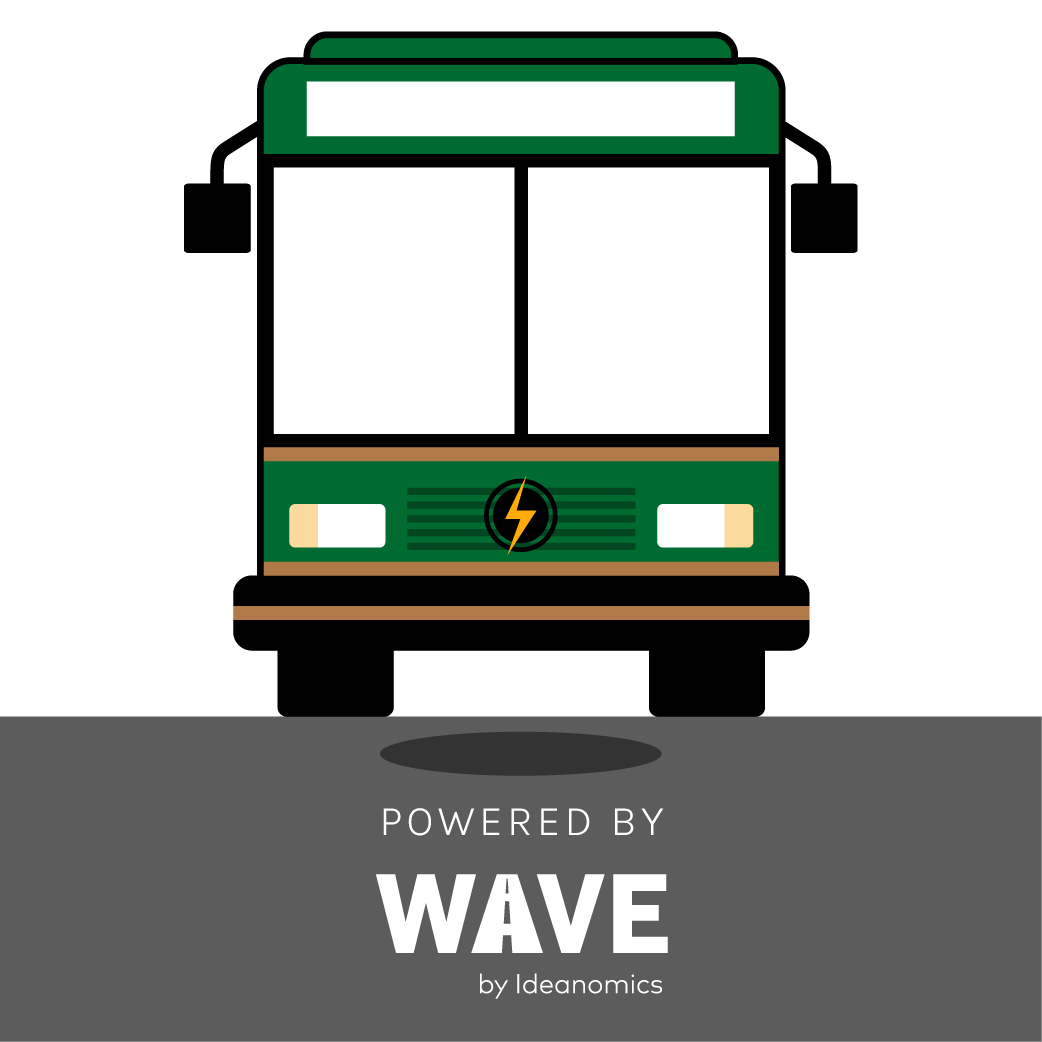

CCCTA Route 4 Trolley Stop - Walnut Creek Downtown.
